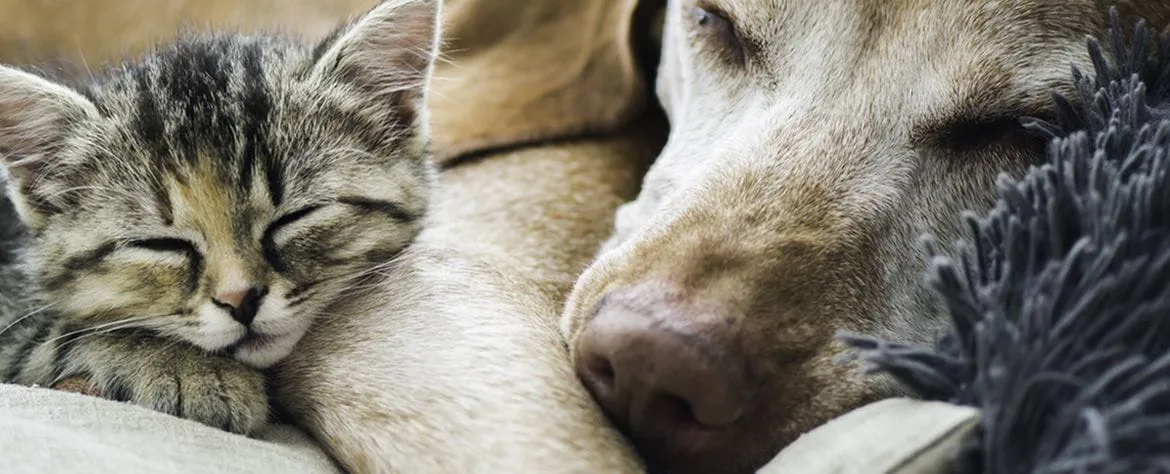March Case of the Month: Bear, the sweet dog who learned that needles make pain go away!
by Jessica Cantrell, DVM, PhD, cVMA
 Bear is a 6-year old female German Shepherd Dog that presented to All Pets Animal Hospital for evaluation and treatment of pain. Bear has always been an adorable and happy pup! She loves to hit the ground running every day with her pal Rese, another German Shepherd Dog, on her Mom and Dad’s ranch. Bear also enjoys waking up and taking a special walk with her Dad every morning to fetch the daily newspaper, and soak up all the love from her family. However, everything started when Bear was having trouble getting up to enjoy her most favorite times with her family, and cutting her games of chase short with Rese, in favor of laying down in the Southern California sun. She continually tried to be there to experience all of the good times with her family, but was unable due to pain. Bear was no longer her carefree self. Mom and Dad set out on a mission to find out the cause and the very best quality of care to relieve Bear’s pain, and enhance her quality of life.
Bear is a 6-year old female German Shepherd Dog that presented to All Pets Animal Hospital for evaluation and treatment of pain. Bear has always been an adorable and happy pup! She loves to hit the ground running every day with her pal Rese, another German Shepherd Dog, on her Mom and Dad’s ranch. Bear also enjoys waking up and taking a special walk with her Dad every morning to fetch the daily newspaper, and soak up all the love from her family. However, everything started when Bear was having trouble getting up to enjoy her most favorite times with her family, and cutting her games of chase short with Rese, in favor of laying down in the Southern California sun. She continually tried to be there to experience all of the good times with her family, but was unable due to pain. Bear was no longer her carefree self. Mom and Dad set out on a mission to find out the cause and the very best quality of care to relieve Bear’s pain, and enhance her quality of life.
Bear had a previous history of being painful in the hind end, most notably on her right side, and was previously receiving chiropractic treatments, supplements, and anti-inflammatory medication. While these therapies seemed to be improving some of her clinical signs, she continued to be in pain and was not interacting with her family and environment as much anymore. Bear came to All Pets Animal Hospital for a solid Western medical diagnosis of her pain, and to discuss a more Eastern medical approach for treatment. On physical exam we noted Bear was slow to rise from a sitting position and did not like for her hind end to be touched.
Bear was given light sedation so that we could further evaluate her hips and joints without causing her any more pain. On further evaluation of her hind limbs, she was noted to have crepitus (crunching) of her joints, indicating severe inflammation, and decreased range of motion. She was also experiencing severe pain in her back. It was difficult for everyone to see her experiencing this much pain, and even harder for her family to watch. Bear’s Mom started off by letting me in on a promise she made long ago to both of her pups . . . she would never, ever let them be in pain or suffer, and would always be there to give them the very best.
With this in mind, we continued to investigate the causes of Bear’s pain. We submitted labwork and x-rays of her back and hind limbs to better evaluate Bear’s overall health, organ function, and musculoskeletal systems. X-rays showed degenerative joint disease (arthritis) in her hips, knees, and back. However, labwork looked fantastic. We finally had a good Western diagnosis of arthritis, and found the cause of her pain. Now, we were able to discuss options for treatment and get Bear back on her feet, literally. Bear’s Mom and Dad were interested in a more Eastern approach to treat her pain and she was an excellent candidate for acupuncture!
Acupuncture is truly a treatment modality where modern science meets an ancient art! Acupuncture is the stimulation of specific points on the body, which have the ability to alter various biochemical and physiological conditions in order to achieve a healing effect. Where indicated, acupuncture works well when used alone or in conjunction with other rehabilitation modalities and traditional veterinary medications. Veterinary acupuncture has been used to treat animals for nearly 4,000 years in China. In North America, it has been used for decades, in both domestic and exotic animals. In veterinary medicine, an interest in acupuncture has recently gained significant interest due to scientific research and evidence based medicine supporting the beneficial effects of acupuncture in our animal patients. Ancient Chinese medical philosophy believes that disease is a result of an imbalance of energy in the body. Acupuncture is believed to balance this energy, and thereby assist the body in healing disease. In Western terms, acupuncture can assist the body’s efforts to heal itself by causing certain physiologic changes. In Bear’s case, our goal was to use acupuncture to stimulate nerves, increase blood circulation, relieve muscle spasms, and cause the release of hormones such as endorphins (one of the body’s pain control chemicals) and cortisol (a natural steroid) to decrease inflammation, and ultimately, to relieve pain.
We started each treatment by needling calming points in the body, then treating specific acupuncture points that have been scientifically shown to aid in relieving pain associated with arthritis in Bear’s hips, knees, and back. During treatments we also used myofascial trigger points to needle. A trigger point exam is performed by using slight pressure on the muscles to find patterns of muscle soreness, which indicates an area of underlying injury or pathology. To identify Bear’s trigger points, a careful evaluation of her soft tissue (muscles, fascia, and skin) was performed to help localize and treat the source of discomfort. Performing a myofascial examination on every patient, regardless of presenting complaint, aids in identification and improved treatment of pain conditions. Acupuncture of a myofascial trigger point is easy and rewarding, though it can cause some mild discomfort at the time of needle insertion. Trigger points can be localized and treated by careful palpation, to determine tight bands of muscle that are associated with increased pain intensity and may have an associated twitch response when directly palpated. Once identified, the trigger point is stabilized between two fingers, then an acupuncture needle is inserted directly into the center of the painful point. Achieving a local twitch response with needle insertion is important in accomplishing immediate and more complete pain relief. Rapid redirection and twisting of the needle is helpful to achieve the local twitch response needed for release of the muscle, and is usually tolerated well by the patient.
Bear did fantastic during her acupuncture treatments. She remained calm and quiet, and seemed to enjoy the needle’s stimulating effects. Bear also recovered from her treatments well, although she did seem a little “wiped out” and would snooze for about 24 hours after each treatment. However, after about the third treatment, Bear was starting to get her game back! Given her diagnosis of arthritis, a chronic disease process, and improvement with acupuncture treatments, I suspected we would only continue to see a significant improvement with further treatments. In cases of chronic disease, acupuncture is often used for palliative care and the length and frequency of treatments truly depends on how well the patient responds to treatment. It may take up to 8-10 treatments to see significant improvement with chronic disease processes. It is VERY individually based! Once optimum response is achieved, treatments can be tapered off so the greatest amount of symptom free time elapses between them.
Bear has had a total of 7 treatments, and is doing great! She is out and about enjoying life with her family and Rese again. With Bear’s case, we used acupuncture in combination with an anti-inflammatory ancient Chinese herb called Du Gi Pi San, and Omega-3 Free Fatty Acids, which have been scientifically proven to have anti-inflammatory effects. She still has good days and bad. However, the fantastic days she shares with her family are quickly outweighing the bad. We are extremely pleased with how well she is doing! And Bear’s Mom and Dad are ecstatic to have their girl back in action!
I feel so lucky to have the opportunity and pleasure to work with this special lady and her amazing family. And I cannot express how happy I am to have made a difference in her life!




